How Does an Oxygen Concentrator Work and Where to Buy One
During the coronavirus pandemic there has been serious demand for supplemental oxygen, and an oxygen concentrator might be the ideal alternative should you develop mild symptoms and do not need to be admitted to a hospital setting.
If your doctor has suggested that you need an oxygen concentrator for oxygen therapy, you might be thinking “What is an oxygen concentrator and how does an oxygen concentrator work?” Surprisingly, the mechanism is very simple: Oxygen concentrators are able to purify and concentrate the existing air around us, which is actually composed of about 35% oxygen and 65% nitrogen, and refine it so that you are breathing up to about 90% oxygen, in an endless supply so long as the oxygen concentrator has power.
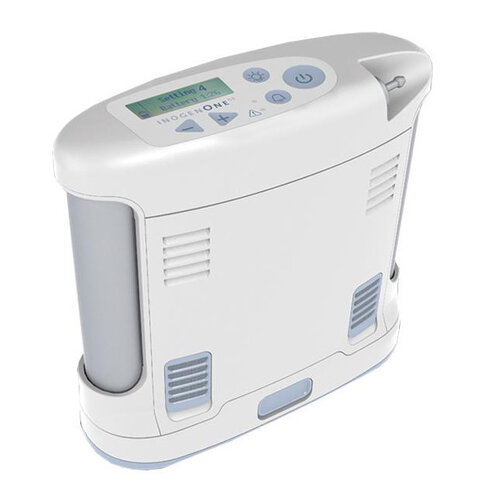
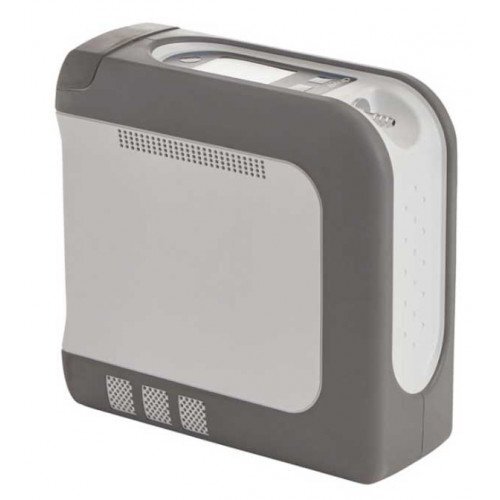
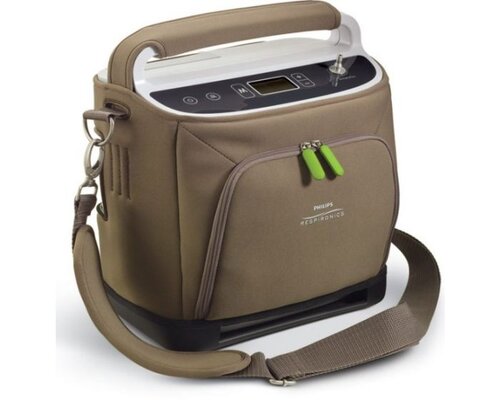
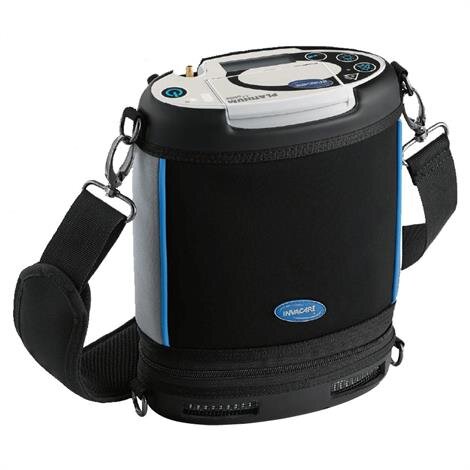
An oxygen concentrator is a medical device used to deliver oxygen to those who need it. People may require an O2 concentrator if they have a condition that causes or results in low levels of oxygen in their blood, such as respiratory ailments or illnesses that have caused the lungs to perform poorly, like COVID-19. A portable oxygen concentrator could be a great in home recovery tool after any respiratory illness or event. An oxygen concentrator has to be purchased with a prescription, though most vendors will as you for your Doctor’s name and phone number, and will follow up for you after you make your purchase.
Our recommended dealers, shown below this article, carry a number of top of the line and highly reviewed models, and when you order the product, you simply provide the information regarding your provider.
Oxygen concentrators can be purchased as a standalone unit that sits on the floor, or can be portable, either carried like a satchel, or attached to a personal care device such as a walker, wheel chair, or motorized scooter.
So how does an oxygen generator work?
Oxygen concentrators are powered by standard household electricity, plugged into the wall, or by battery after charging the device. Once powered up, an the device concentrates and purifies the surrounding air to provide the oxygen you need. It also removes impurities by filtering the atmospheric air around it, providing a clean source of highly concentrated oxygen. An O2 concentrator is made up of several instrumental components, including a compressor, a sieve bed filter and electronic circuitry.
Unlike a line and cannula running from an oxygen tank, which is cumbersome and extremely costly, and is even more difficult to manage as a portable source, a concentrator pulls in O2 from the air around you continuously, filtering and compressing it, and delivering it to you in real time without storing it.
The compressed oxygen inside an oxygen tank delivers a limited amount of oxygen to the user, eventually requiring a refill or replacement when the oxygen is gone. People using compressed oxygen tanks must keep several tanks on hand to ensure that they do not run out of oxygen before receiving a refill.
If you are wondering, “How does an oxygen generator work without requiring refills?” no refills are needed because the oxygen concentrator simply uses the surrounding air to create oxygen-rich air, meaning the oxygen supply will never run out as long as it is powered and has access to an air supply. Instead of refilling compressed air, an oxygen concentrator just needs access to power and open air.
An oxygen concentrator contains a small air compressor, two cylindrical cartridges filled with zeolite pellets, a filtering medium that removes nitrogen, a pressure equalizing reservoir, and some valves and tubes. In the first half of the process, the first cylinder receives air from the compressor, taking about 3 seconds.
During that time the pressure in the first cylinder rises from sea level pressure to about 3 times normal atmospheric pressure and the zeolite filtering medium (pellets) becomes saturated with nitrogen. As the first cylinder reaches a concentration of almost pure oxygen, a valve opens and the oxygen rich gas is pushed to the pressure equalizing reservoir, also called the product tank, where the users oxygen hose and cannula is connected.
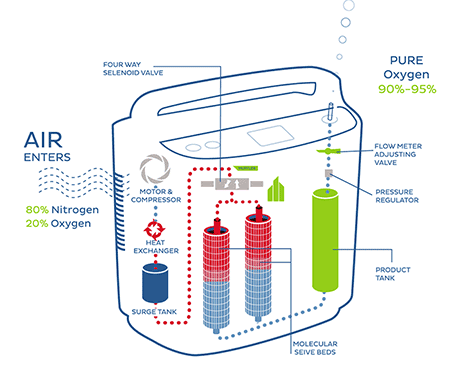
The second half of the process involves another valve position change so that the air from the compressor is directed to the second cylinder. The pressure in the first cylinder drops as the enriched oxygen moves into the product tank, allowing the nitrogen to be sucked from the zeolite media back into gas.
Finally, there is another valve position change to vent the nitrogen rich gas in the first cylinder back into the ambient atmosphere, keeping the concentration of oxygen in the pressure equalizing reservoir from falling below about 90%. The pressure in the hose delivering oxygen from the equalizing reservoir is kept steady by a pressure reducing valve.
How Does a Portable Oxygen Concentrator Work?
Portable oxygen concentrators are made to travel with you, and they are significantly more compact and lighter in weight than a stationary oxygen concentrators. The limitations are largely a function of charging as they are able to run for a certain amount of time on battery power before requiring that you plug the unit back into a power source.
In some cases, stationary oxygen generator units are made to provide continuous flow oxygen, while most portable oxygen concentrator units provide what is called pulse dose oxygen, building up pulses of oxygen rich gas to deliver intermittently. Essentially, portable concentrators work the same way as a stationary system. Many automotive vehicles today are equipped with 110v power sources, so portable units can be continuously charged while you are in a vehicle.
How to Use a Portable Oxygen Concentrator
As with any medical device, read and follow the manufacturer’s directions carefully, but in many cases, you will follow the same basic procedure. Here is how to use a portable oxygen concentrator.
Make sure you have adequate power for your concentrator, either via a fully charged battery or an available AC or DC power source
Always make sure you have a clean nasal cannula, or mask, and tubing properly attached to the nozzle fitting on your oxygen generator
Ensure your particle filter cartridge unit is properly attached to ensure particles are not drawn into the oxygen machine which could damage the unit
Make sure you place the oxygen concentrator in a well-ventilated, open area, and that your carrying bag has unobstructed ability to pull in outside air as the intake and exhaust must have clear access to work properly
Press the power button and allow the oxygen concentrator to warm up properly to ensure it reaches the correct oxygen concentration levels before use. Your model should indicate when the O2 concentrator is ready for use
Set the portable oxygen concentrator to your prescribed flow rate setting
Place the nasal cannula into your nostrils and over your ears, adjusting for proper and comfortable fit, then breathe through your nose to begin getting oxygen from your O2 concentrator
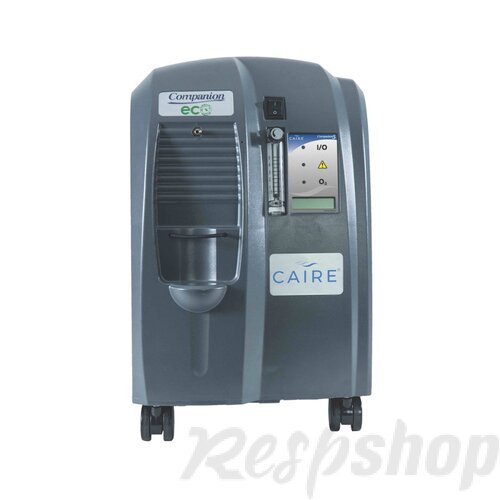
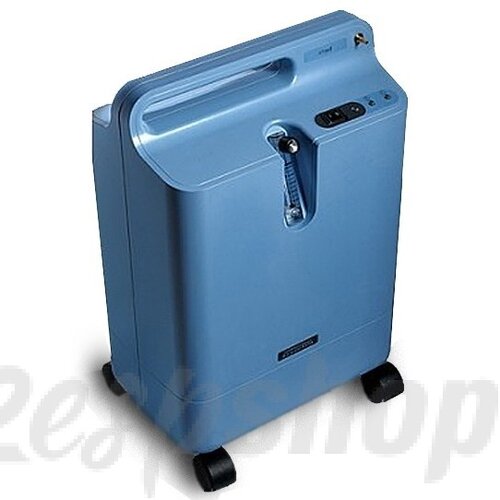
What are the benefits of oxygen therapy?
There are many benefits of oxygen therapy. In many adults with chronic lung disease, studies have shown that long-term oxygen therapy has improved quality and length of life. Oxygen can decrease shortness of breath when you are active and allow you to do more.
What types of portable oxygen systems are there?
There are three systems that can supply oxygen: concentrators, compressed gas and liquid. Each system has a portable system that adapts to the equipment to make it easier to use. Portable systems give you the freedom of mobility and a higher, more energizing level of confidence. They allow you to be more active. Many people have a lot of questions about portable oxygen concentrators.
What is a portable oxygen concentrator?
Portable oxygen concentrators are oxygen machines that draw in oxygen with the use of a battery, electricity or DC power, for example, the power port in your car. They are smaller and lighter than stationary concentrators. People often like the portability of portable oxygen concentrators.
Examples of portable oxygen concentrators include:
AirSep® FreeStyle®
AirSep® LifeStyle
Inogen One®
Respironics EverGo™
SeQual Eclipse®
Portable oxygen concentrators can vary in weight from 3 to 18 pounds. Some can be carried in backpacks or carts that can be rolled along next to you.
What is continuous vs. on-demand (pulse) flow?
Oxygen is often delivered by a small plastic tube called a cannula. The cannula is placed into the nostrils, draping over or around your head and ears and delivers oxygen to the airways. Oxygen may be delivered continuously through the nasal cannula. Oxygen may also be delivered when you inhale only. This is called on-demand (pulse) flow. Many people cannot use on-demand flow. This may not deliver enough oxygen to your body when you exercise, sleep and rest. On-demand (pulse) flow is not recommended when you sleep. While asleep, you may not always trigger the system. There are some health conditions that make it difficult use an on-demand system, because the person may be unable to physically trigger the system (COPD, pulmonary fibrosis, neuromuscular diseases).
How do I know if a portable oxygen concentrator will work for me?
Your oxygen saturation level (SAT) can be checked using the portable oxygen concentrator you would like to use. The oxygen SAT should remain above 88-90 percent when you rest, while you are walking and during sleep. The portable oxygen concentrator you are testing is not adequate if your oxygen sat is below 89 percent during rest and exercise. Your health care provider will write a prescription for oxygen based on testing. Some people purchase a pulse oximeter to monitor the oxygen sat at home, doing different activities and when traveling to different altitudes.
What portable oxygen concentrators have continuous flow of oxygen?
All portable oxygen concentrators provide on-demand (pulse) flow oxygen delivery. Some portable concentrators do have a feature you can turn on that delivers a continuous flow of oxygen up to 3 liters per minute. There is not a portable oxygen concentrator that will provide over 3 liters of continuous flow oxygen at this time. Technology with these devices is rapidly developing though, and soon enough devices will be available that will deliver continuous free flow oxygen.
What is the difference between liter flow and settings?
On-demand (pulse) portable oxygen concentrators run on settings instead of liter flow. A setting delivers an intermittent fixed volume of oxygen when the system is triggered by your breathing in. The highest on-demand setting a portable oxygen concentrator will go to is a setting of 9. Most have a high setting of 6. A setting of 6 is not equal to a liter flow of 6 liters/minute. You need to be tested on your selected portable oxygen concentrator to confirm it is meeting your oxygen needs.
What do you consider with the portable oxygen concentrator battery?
The battery time varies per product, as do settings. Some people may need several batteries to meet their oxygen needs over time. Batteries can be rented through some oxygen companies. If you would like information about portable concentrators or other oxygen systems, contact your oxygen provider.
Can I purchase or rent a portable oxygen concentrator?
Many oxygen companies are limited in the brand and number of portable oxygen concentrators they rent or have for purchase. Insurance may also determine whether a portable oxygen concentrator is covered. Obtaining a portable oxygen concentrator is often determined by:
The ability of the oxygen concentrator to meet your oxygen needs
The availability of the portable oxygen concentrator with the oxygen company
Your insurance coverage
Considering this you may purchase or rent a portable oxygen concentrator with a prescription.
Can I travel with oxygen?
Many people travel while using oxygen. Advance planning is important when considering a trip.
What is the cost of oxygen while traveling?
Most insurance companies pay for oxygen in 30-day increments. No other oxygen company can bill your insurance for oxygen, as your local oxygen vendor is billing. If you are taking a trip, ask your oxygen company about the travel policy. Some oxygen companies have national locations and can accommodate your travel. Locally owned oxygen companies may also locate oxygen companies at your destination. They may assist in paying the travel oxygen expense for you. You may have to pay the travel oxygen expense out of your pocket. This cost will vary by location and company policy.
What should I consider when traveling by air?
Many airlines are allowing the use of portable oxygen concentrators to provide in-flight oxygen. There are a number of these devices approved for airline use, including AirSep LifeStyle, AirSep FreeStyle, Inogen One, Respironics EverGo and SeQual Eclipse. Contact your airline to obtain a list of approved devices. Contact your oxygen company and airline at least two weeks before you travel to obtain the required documentation for use of portable oxygen concentrators on their airplanes and at your travel location.
You will be required to use the battery on the portable concentrator during the flight. Ask your oxygen company if you can rent or buy enough batteries to last the duration of your flight. The FAA requires enough batteries to run the concentrator for 150 percent of travel time (including layovers).
Where else can I get information about using oxygen?
The internet holds many resources for travel. Information about oxygen therapy may be available in your community from your health care provider, your oxygen supply company, your local American Lung Association, a support group of other people using oxygen in your community.